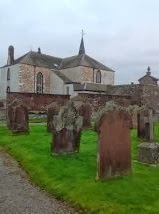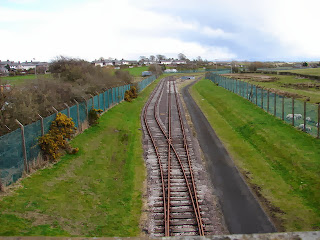Sir Robert Gordon who donated the bell in the Church Tower in the 1620s was one of the very first to obtain a charter to establish a colony of emigrants in Nova Scotia and thus begin Scotland's most consistently successful export to date, its own people. He and his son called the colony Galloway.
 |
| Crossmichael Church |
 |
| Oscar the Dog and his novel |
Later at New Galloway, two buses missed and in the pitch dark, the Cross Keys Inn was packed, but everyone was from Cirencester apart from Oscar the dog, who owns his own book and piano and is from London. It was a very big shooting party. Someone made the usual joke about hunting peasants. As they chattered. a weather beaten and worldly old man was scooping their fifty pound notes into a huge wad and I was reminded of Wille;s poem, The Marksman'.
I never saw him waste a single shot.
He wouldn’t fire unless he knew a kill,Marksmanship guaranteed to fill the pot.
In memory I see him standing still
over the autumn moor. The swollen bags
of bowed-and-scraped-to gentry on a shoot,
wounding or blowing driven game to rags
or wasting cartridges without a hit
he sneered at, although sometimes paid to beat
their fostered game-birds on an autumn day.
‘There goes some
and mostly killed by accident,’ he’d say.





